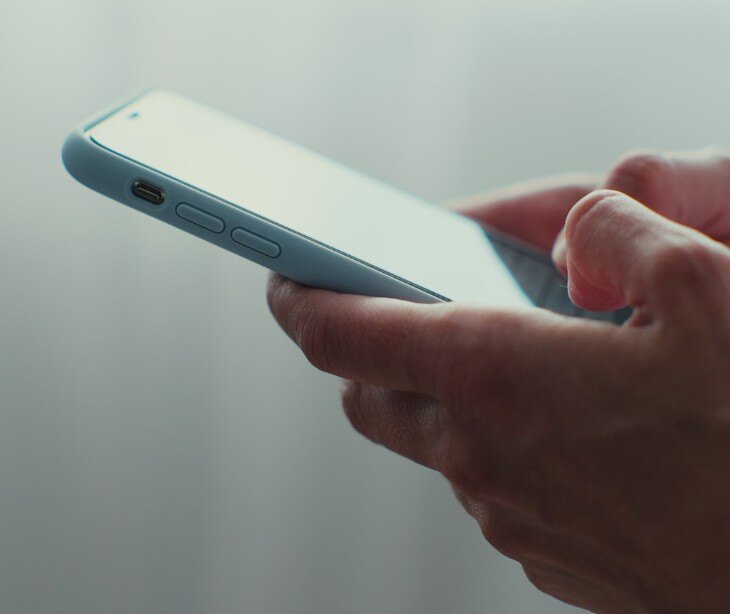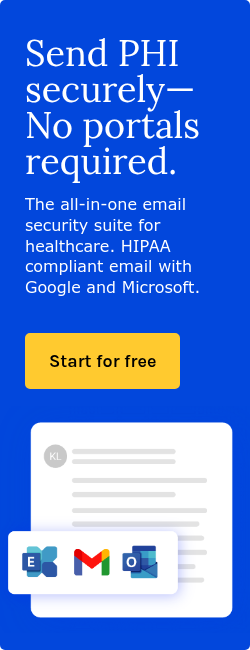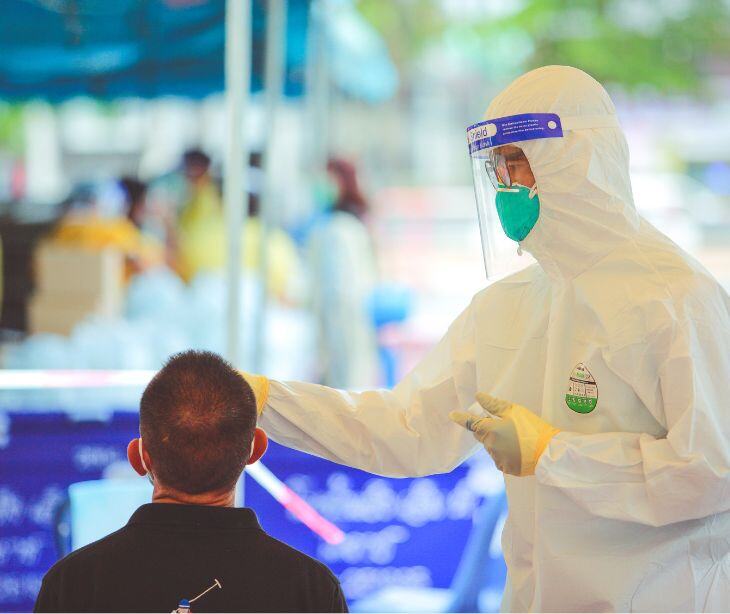
Timely, accurate communication is required for managing public health responses to exposure events involving waterborne or airborne illnesses. Whether it's a localized measles outbreak or a global health emergency like COVID-19, public health officials must be able to reach healthcare providers, frontline teams, and affected individuals with rapid, secure messaging that protects privacy while facilitating swift action.
According to the CDC’s Public Health Emergency Preparedness and Response (PHEPR) Capabilities report, “Emergencies require exchanging large amounts of information at a rapid pace with multiple stakeholders, often using multiple modes of communication.” These emergencies are often “rapidly evolving” and marked by “significant uncertainty,” which introduces complex challenges in reaching technical audiences with up-to-date, actionable guidance. The report states that “the success of the public health emergency preparedness and response system relies on the effective communication of information both horizontally across involved organizations and individuals who make up a complex network of response partners and vertically from the federal level down to the regional, state, and local levels.”
A barrier identified is access to reliable contact information: “Effective communication of alerts and guidance is dependent on access to communication platforms and contact information for target audiences. A lack of preexisting, accurate, and up-to-date distribution lists can hinder the reach and timeliness of public health guidance.” The solution? “Standard distribution lists with multiple types of individual contact information (e.g., cell phone, email) need to be developed and maintained for health care providers, local health departments, executive leadership, and response managers.”
The role of HIPAA compliant messaging
Secure messaging platforms that meet HIPAA standards offer a compliant, efficient, and scalable solution. These tools can maintain up-to-date contact lists and deliver alerts directly to providers’ mobile phones, ensuring confidentiality while speeding up outreach efforts. As noted in Preventing Chronic Disease, “Text messaging is a powerful communication tool for public health purposes, particularly because of the potential to customize messages to meet individuals’ needs.” However, the study also warns that using text to send personal health information “requires analysis of laws addressing the protection of electronic health information.” HIPAA compliant messaging removes that ambiguity by providing a legally sound framework for sensitive communication.
Limitations of traditional methods and the promise of digital tools
According to a review published in JMIR Public Health and Surveillance, “On March 11, 2020, COVID-19 was officially declared a global pandemic by the World Health Organization (WHO). By January 2022, over 304 million confirmed cases of COVID-19 and 5.4 million deaths were reported.” In response, efforts to reduce the spread of infection led to the development of a “myriad of digital exposure notification tools to support traditional public health contact tracing strategies.”
As the review explains, “The goal of contact tracing is to identify those who have been exposed to a particular disease and isolate them before they further spread the disease.” Traditional contact tracing typically involves identifying and reaching out to individuals exposed to an infected person, determining who they may have been in contact with, and notifying those individuals to isolate and get tested. This approach helps prevent the formation of new transmission chains.
However, there are significant limitations. “Individuals may be reticent to engage with contact tracers, not be forthcoming with contacts, and may not remember their past contacts.” In addition, contact tracing becomes especially challenging with fast-moving viruses like COVID-19, as “the virus can be transmitted without symptoms, making it time-consuming and hard to track using traditional contact tracing methods.”
To address these gaps, digital solutions have emerged as critical complements. As the review notes, “Digital solutions can supplement and work in a synergistic manner to address many of these shortcomings,” helping to improve the speed, reach, and effectiveness of public health responses in future outbreaks.
A step backward in exposure alerts
Despite the initial momentum, public infrastructure for exposure notifications has been quietly dismantled. As CNBC reported, “Americans in most states will no longer receive Covid exposure notifications on their smartphones.” While nearly 30 states adopted an Apple-Google system to alert users of exposure risk, the Association of Public Health Laboratories noted that “the majority of states” stopped using the system after the federal public health emergency ended.
The U.S. Government Accountability Office (GAO) acknowledged that “exposure notification apps can allow for more rapid and broader contact tracing—ideally helping to slow disease spread.” However, they also identified five challenges, including privacy concerns and concerns over efficacy. HIPAA compliant messaging provides a more trusted and sustainable alternative. It maintains privacy, ensures legal compliance, and works within existing healthcare infrastructure, allowing secure messaging to support rapid outreach, maintain public trust, and help fill the communication gaps left by discontinued app-based systems.
Real-world examples and case studies
Legionnaires’ disease outbreaks and communication delays
Between 2006 and 2015, New York City experienced multiple community-associated Legionnaires’ disease outbreaks, resulting in 213 cases and 18 deaths. Three of these outbreaks occurred in 2015 alone, including the largest on record with 138 cases. These incidents prove the need for rapid, targeted notifications to at-risk individuals to reduce morbidity and mortality associated with such outbreaks.
Air quality alerts and health outcomes
During wildfire seasons or industrial pollution events, air quality warnings are beneficial for vulnerable populations, including individuals with asthma, chronic obstructive pulmonary disease (COPD), or cardiovascular conditions. Studies on Air Pollution and Acute Kidney Injury have shown that timely alerts about fine particulate matter (PM2.5) air pollution can help reduce emergency room visits by enabling early preventive actions. For instance, research has indicated that increased awareness and timely communication regarding air quality can lead to behavioral changes that mitigate health risks associated with air pollution exposure.
Flint water crisis
During the Flint, Michigan water crisis, delayed and fragmented communication led to prolonged exposure to lead-contaminated water. The crisis outlined the need for improved risk communication strategies and enhanced environmental health infrastructure to prevent and respond to such public health emergencies.
COVID-19 airborne transmission alerts
Throughout the COVID-19 pandemic, healthcare organizations developed technology-based screening tools to assist in rapid case identification and appropriate triaging. These tools supported symptom and exposure screening of patients and visitors prior to entering healthcare facilities, facilitating timely notifications and interventions.
Our solution
When a health threat arises like contaminated water, wildfire smoke, or an airborne illness, people need to know what’s happening and what to do next. Delays or confusion can put lives at risk, especially in communities where healthcare access is limited.
Paubox makes it possible for public health teams, clinics, and emergency responders to send HIPAA compliant text messages directly to individuals who may be at risk. These are encrypted, private messages that go straight to a person’s phone, no apps to download, no portals to log into, and no barriers to understanding the next step.
Whether it’s a boil water advisory, an evacuation notice, or instructions to seek medical attention, every second counts. With Paubox, health providers can deliver real-time alerts that are fast, trusted, and secure. The simplicity of texting meets the security of healthcare-grade encryption, allowing agencies to act quickly while staying compliant with patient privacy laws.
For recipients, it’s a familiar and accessible way to stay informed. For public health officials, it’s a tool that strengthens trust, protects communities, and ensures critical information reaches the people who need it most.
See more: Introducing HIPAA compliant texting API by Paubox
FAQs
How can healthcare organizations prepare contact lists before an exposure event occurs?
Organizations should maintain continuously updated, segmented contact databases that include multiple channels (e.g., email, phone, SMS). These lists should be verified regularly and categorized by role (e.g., providers, patients, staff) to allow targeted, rapid messaging in an emergency.
What’s the difference between HIPAA compliant messaging and traditional public health alerts like robocalls or emergency broadcast systems?
HIPAA compliant messaging allows for secure, personalized communication that can include protected health information (PHI), while traditional systems are often broad, impersonal, and lack the encryption or access controls needed to safeguard sensitive data.
Can HIPAA compliant messaging be integrated into emergency preparedness drills?
Yes. Including secure messaging in preparedness exercises helps organizations test how quickly and effectively alerts can be sent, identify gaps in communication workflows, and train staff to respond appropriately while maintaining privacy standards.
What role does secure messaging play in reducing misinformation during outbreaks?
By providing verified, direct communication from trusted healthcare sources, HIPAA compliant messaging helps counteract misinformation that often spreads during crises, reducing panic and guiding recipients toward evidence-based actions.
Are there risks in overusing secure alerts, even if they're HIPAA compliant?
Yes. Frequent, unnecessary alerts can lead to message fatigue, causing recipients to ignore critical updates. Establish thresholds for alerting, prioritize urgency, and balance information with clarity and relevance.
Subscribe to Paubox Weekly
Every Friday we'll bring you the most important news from Paubox. Our aim is to make you smarter, faster.




